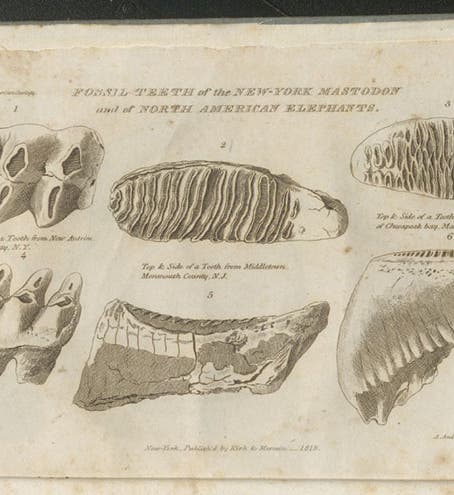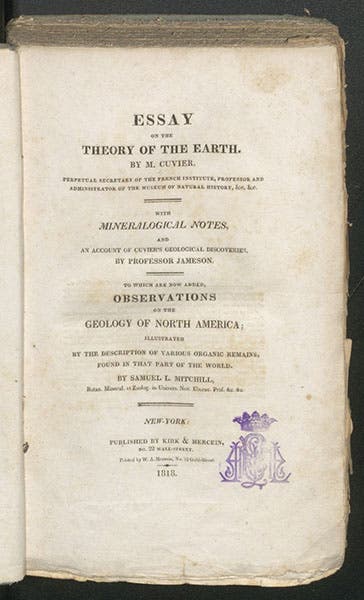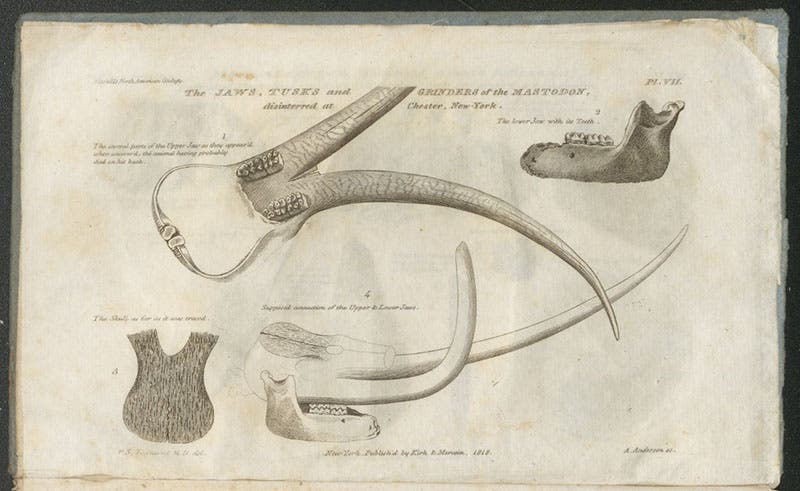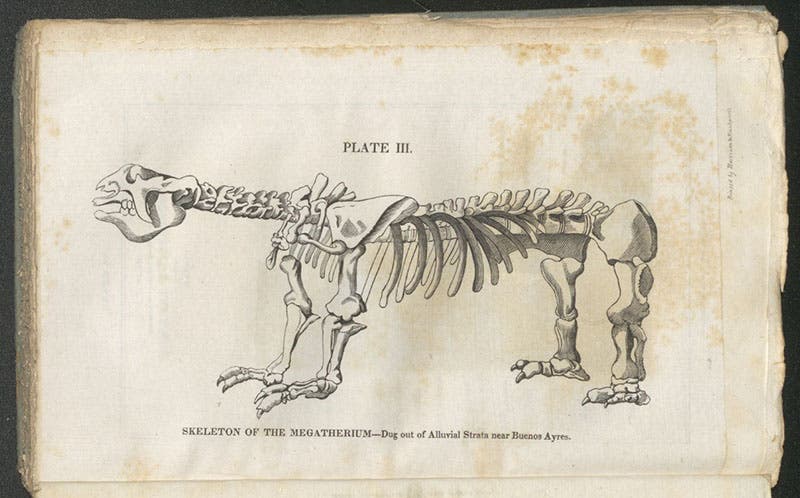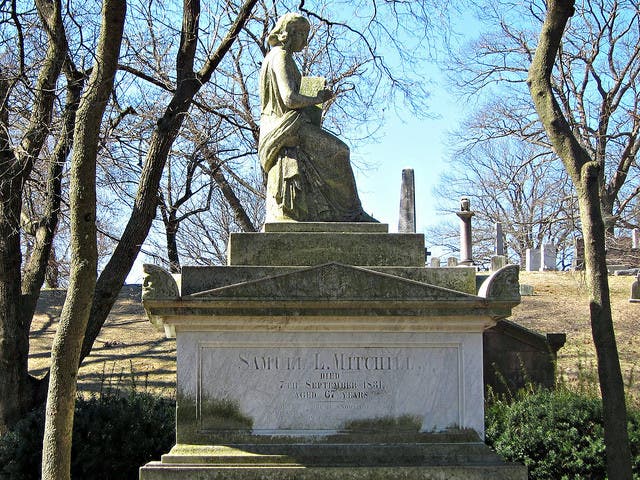Scientist of the Day - Samuel Latham Mitchill
Samuel Latham Mitchill, an American physician, politician, geologist, and naturalist, was born Aug. 20, 1764, in New York State. He received his medical degree from the University of Edinburgh and settled down in New York City, where he practiced medicine and taught natural history at Columbia College. He then served in the U.S. Senate and the House of Representatives. He was good friends with Thomas Jefferson, Governor DeWitt Clinton, and indeed just about everyone else. He also had close colleagues in Paris, London, and Edinburgh. He has been called a polymath, but that isn't really the right term, as he knew a little about a lot of things, but not a lot about any one thing. He is better described as a very curious man with wide interests and occasional penetrating insights.
We have only one book by Mitchill in our collections, but it is a perfect one for this occasion. Georges Cuvier had published a four-volume work on fossils in 1812, and he had prefaced the first volume with a long “Discourse” that amounted to a theory of the earth. The “Discourse” was soon published all by itself in its original French, and then was translated into English and published by Robert Jameson at Edinburgh, beginning in 1813. In 1818, Mitchill published the first American edition of Cuvier’s “Discourse,” using Jameson's translation, but adding a hundred-page appendix of his own, called "Observations on the Geology of North America." In it, he showed himself to be an astute observer of the geological landscape of New York and the other regions he had visited. He noted, for example, that the Great Lakes must once have been salty, because of the extensive limestone deposits, and larger, and pointed out the various notches by which this inland sea of lakes was drained. He gave a good description of New York's own famous piece of geology, Niagara Falls.
But Mitchill devoted most of his "Observations" to fossils, especially those of large quadrupeds, like mammoths and mastodons. He pointed out that America was much richer in these remains of giants than any place else in the world. He knew that Charles Willson Peale had found mastodon remains in 1801 in New York, but he was much more interested in talking about the mastodon that he helped dig up in Chester, New York, in 1817. It came from a bog, and the skull and bones were in an advanced state of decay, so it couldn't really be excavated, but it could be drawn, and that is what Mitchill did. He included several plates of his mastodon at the end of his "Observations." He even noted that the right tusk was shorter and more curved than the left, indicating that the behemoth must have rooted with the right one (fourth image, below).
The frontispiece and the first four plates in the book are the same as those that appeared in Jameson's editions, of which there had been three (1813, 1815, 1817), although they were recopied for the American edition. We reproduce two of those, because they are interesting: the first skeleton of a Megatherium, or giant ground sloth, restored by Juan Battista Bru de Ramon in Madrid and included by Cuvier in his 1812 work on fossils (fifth image), and a stratigraphic section of the Paris basin, from a different work by Cuvier, that Jameson included in his edition of the Essay, with an interesting change to one set of strata, making it resemble the face of Napoleon (sixth image).
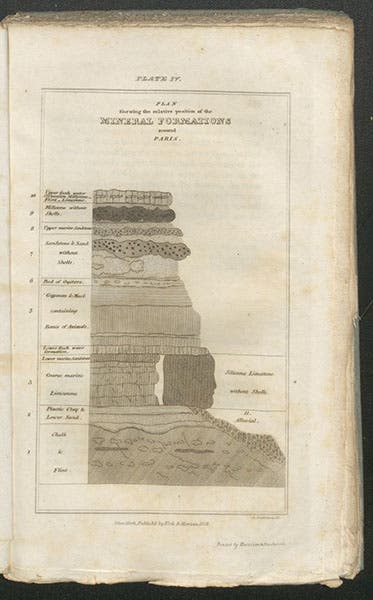
Stratigraphy of the Paris basin, engraving copied from Robert Jameson’s edition of Cuvier’s Essay, in Samuel Latham Mitchill (ed.), Essay on the Theory of the Earth, by Georges Cuvier, 1818. Note the section of strata that resembles the face of Napoleon, which also appeared in Jameson’s engraving (Linda Hall Library)
There is a portrait of Mitchill that is quite attractive and is used by Wikipedia; it is a posthumous engraving, showing an older Mitchill. We use instead one that is less charming but seems more authentic, an engraving of 1801 by James Hardie that resides in the National Portrait Gallery (second image).
Mitchill died on Sep. 7, 1831, and was buried in Green-wood Cemetery, Brooklyn. He has a handsome and rather elaborate monument (seventh image). I am not sure how that worked, since the famous cemetery was not founded until 1838. I am sure there is an explanation.
Dr. William B. Ashworth, Jr., Consultant for the History of Science, Linda Hall Library and Associate Professor emeritus, Department of History, University of Missouri-Kansas City. Comments or corrections are welcome; please direct to ashworthw@umkc.edu.

